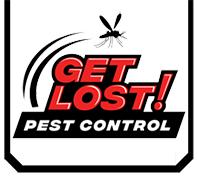Did you know that cornfield ants, also known as moisture ants, can include multiple species and are not picky eaters? These small indoor ants have a voracious appetite for sweets, greasy foods, proteins, and even water sources in your home. With their ability to grow rapidly and establish multiple queens, cornfield ant infestations can be difficult to eliminate.
Key Takeaways:
- Cornfield ants are a general term that refers to small, sweet-loving ant species.
- Multiple ant species can be classified as cornfield ants, such as pharaoh ants, Argentine ants, thief ants, and odorous house ants.
- Cornfield ants are not picky eaters and will consume a wide range of foods found in your home.
- Their colonies have multiple queens, enabling rapid growth and making infestation control challenging.
- Understanding the specific ant species and their behaviors is crucial for effective cornfield ant control.
Behaviors and Habitat of Cornfield Ants
Cornfield ants, also known as moisture ants, are highly social insects that thrive in organized colonies. These ants exhibit cooperative behaviors and communicate through pheromones, allowing them to work together in tasks such as foraging for food and building nests.
When it comes to their habitat, cornfield ants prefer to live near sources of food and water. As a result, they are commonly found in indoor areas like pantries and kitchens, where they can easily access sweet treats and other food sources. Their small size and ability to navigate through even the tiniest cracks in walls and floors make them resilient invaders of human living spaces.
While cornfield ants predominantly make their homes indoors, they may also establish nests outside. In outdoor habitats, these ants are often found under vegetation or rocks. Understanding their behaviors, preferences, and nesting habits is crucial in developing effective strategies to control and eliminate cornfield ant infestations.
Cornfield Ant Behaviors
Cornfield ants have several notable behaviors that contribute to their success as a species:
- Cooperative Foraging: These ants work together to find and gather food, allowing them to efficiently exploit available resources.
- Scouting: Individuals from the cornfield ant colony explore new territories to locate potential food sources and establish satellite nests.
- Colonizing: Cornfield ants have multiple queens in their colonies, which helps them rapidly expand and establish new nests.
- Trail Following: By leaving pheromone trails, cornfield ants can navigate back to their nests and communicate the location of food sources to others.
Cornfield Ant Habitat
The preferred habitat of cornfield ants depends on the species, but they generally seek out environments with easy access to food and water:
| Cornfield Ant Species | Preferred Habitat |
|---|---|
| Pharaoh Ants | Indoor areas near moisture, such as bathrooms and kitchens |
| Argentine Ants | Moist environments, including gardens and near water sources |
| Thief Ants | Moisture-rich areas and spaces close to food sources, such as pantries |
| Odorous House Ants | Both indoor and outdoor locations, food sources, and damp areas |
By understanding the behaviors and habitats of cornfield ants, it becomes possible to implement targeted control measures to effectively manage and eliminate infestations in both residential and outdoor environments.
Identifying and Controlling Cornfield Ants
Cornfield ants are small and dark-colored insects that can be found near sources of food. The specific characteristics for identifying cornfield ants may vary depending on the species. Argentine ants, for example, are typically brown in color, while odorous house ants have a dark brown to shiny black appearance. Pharaoh ants, on the other hand, range from light yellow to red in color.
To effectively control cornfield ant infestations, it is crucial to implement preventive measures and targeted strategies. These ants are often seen in kitchens, pantries, and bathrooms, so it is important to keep these areas clean and free from food debris. Sealing food in containers, regularly running the dishwasher, and taking out the trash frequently can also help deter ants from seeking food sources in your home.
If you are struggling to control cornfield ants on your own, it may be beneficial to enlist the services of a professional pest control company. Experts like Get Lost Pest Control can provide tailored solutions designed to address the specific ant species present in Boise. With their expertise and effective ant control methods, you can regain control of your home and prevent future infestations.
If you’re having trouble with ant infestations, contact Get Lost Pest Control. They are your local and reliable pest control pros!




